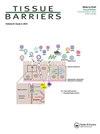Claudins in vulvar cancer - from epithelial barrier to potential tumor-agnostic cancer therapy.
IF 4
Q2 MEDICINE, RESEARCH & EXPERIMENTAL
引用次数: 0
Abstract
The immunohistochemical expression of various members of the claudin family has already been studied in pathological affections of the vulva whether to differentiate precancerous lesions from vulvar squamous cell carcinoma or in inflammatory conditions such as lichen sclerosus. From an oncological perspective, however, immunohistochemical analysis of claudin 18.2 protein expression has become increasingly clinically relevant nowadays since the impressive therapeutic benefits of the claudin 18.2 antibody zolbetuximab have been widely recognized. Systematic studies evaluating its expression, including in vulvar cancer, are needed to understand whether such treatment strategies may eventually benefit patients with vulvar neoplasia.
外阴癌中的cladin -从上皮屏障到潜在的肿瘤不可知的癌症治疗。
各种claudin家族成员的免疫组织化学表达已经在外阴的病理影响中进行了研究,无论是区分癌前病变还是外阴鳞状细胞癌,还是炎症性疾病,如硬化地衣。然而,从肿瘤学的角度来看,由于claudin 18.2抗体zolbetuximab令人印象深刻的治疗益处已被广泛认可,因此目前对claudin 18.2蛋白表达的免疫组织化学分析已越来越具有临床意义。需要系统研究评估其表达,包括外阴癌,以了解这种治疗策略是否最终有益于外阴瘤变患者。
本文章由计算机程序翻译,如有差异,请以英文原文为准。
求助全文
约1分钟内获得全文
求助全文
来源期刊

Tissue Barriers
MEDICINE, RESEARCH & EXPERIMENTAL-
CiteScore
6.60
自引率
6.50%
发文量
25
期刊介绍:
Tissue Barriers is the first international interdisciplinary journal that focuses on the architecture, biological roles and regulation of tissue barriers and intercellular junctions. We publish high quality peer-reviewed articles that cover a wide range of topics including structure and functions of the diverse and complex tissue barriers that occur across tissue and cell types, including the molecular composition and dynamics of polarized cell junctions and cell-cell interactions during normal homeostasis, injury and disease state. Tissue barrier formation in regenerative medicine and restoration of tissue and organ function is also of interest. Tissue Barriers publishes several categories of articles including: Original Research Papers, Short Communications, Technical Papers, Reviews, Perspectives and Commentaries, Hypothesis and Meeting Reports. Reviews and Perspectives/Commentaries will typically be invited. We also anticipate to publish special issues that are devoted to rapidly developing or controversial areas of research. Suggestions for topics are welcome. Tissue Barriers objectives: Promote interdisciplinary awareness and collaboration between researchers working with epithelial, epidermal and endothelial barriers and to build a broad and cohesive worldwide community of scientists interesting in this exciting field. Comprehend the enormous complexity of tissue barriers and map cross-talks and interactions between their different cellular and non-cellular components. Highlight the roles of tissue barrier dysfunctions in human diseases. Promote understanding and strategies for restoration of tissue barrier formation and function in regenerative medicine. Accelerate a search for pharmacological enhancers of tissue barriers as potential therapeutic agents. Understand and optimize drug delivery across epithelial and endothelial barriers.
 求助内容:
求助内容: 应助结果提醒方式:
应助结果提醒方式:


